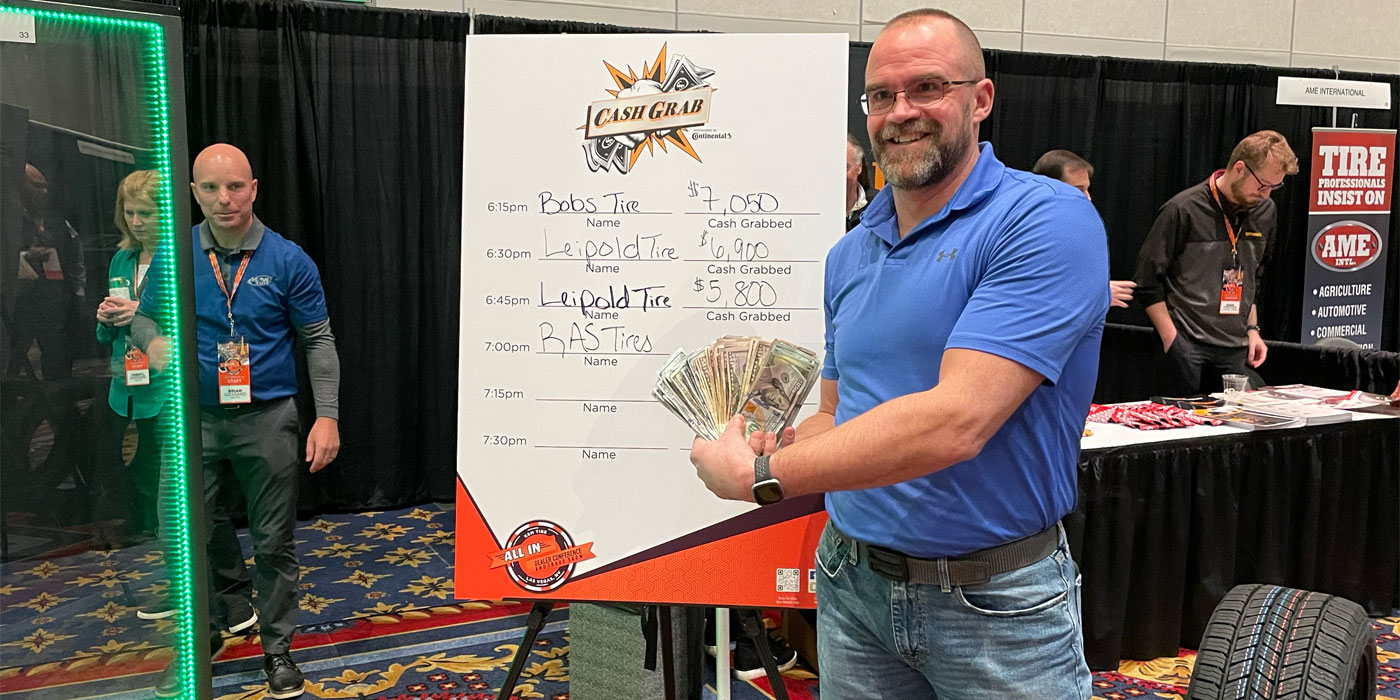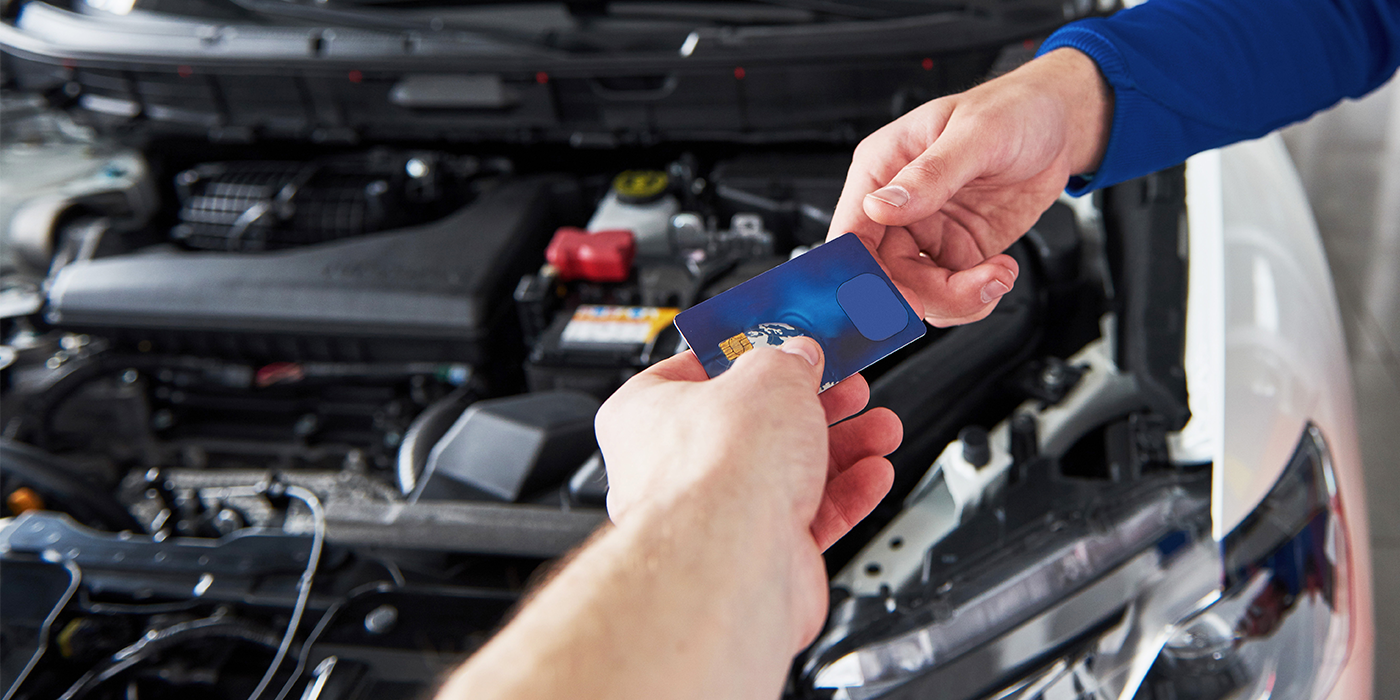Mark-Up vs. Margin
Knowing the Difference Makes a Difference in Profits
Independent dealers often buy service parts from auto dealerships because, for some applications, they feel the quality may be superior to aftermarket parts, or because certain parts are available only through OE sources.
Unfortunately, auto dealers typically discount hard replacement parts about 20% to 25% off recommended resale price to service installers – including tire dealers. Why is that unfortunate? Because if you invoice the customer at the auto dealer’s recommended retail price, it often doesn’t leave you enough profit to cover the costs associated with the acquisition and handling of the part. A 20% discount, for example, may not cover a 25% restock charge. Nor will it cover related warranty costs if the part proves to be defective.
So, the question is this: How much margin or mark-up should be applied to parts (or tires, for that matter) – regardless of the source – to make the acquisition and handling of them profitable?
Which Is Which?
Although you may not think of it this way, profit margins and mark-ups on resale parts are an integral component of the hourly labor rate. With that said, the most costly mistake many dealers commit is to confuse the terms "margin" and "mark-up."
To simplify defining the two, think of them this way: margin is based on the resale price of a part or tire while mark-up is based upon the cost.
Now, that’s pretty easy. Get your calculators and pencils out because here comes the hard part.
If a part costs $75 and you want to make a 25% profit margin, then you need to sell the product for $100. To get to the $100 retail price, divide the $75 cost by 75% (Note: 75% is the reciprocal of 25%. If you require a 35% margin, divide the $75 by 65% to get the new price. See Example 1). However, if you mark up the product by 25%, then you’ll only end up with a selling price of $93.75 – and much less profit (See Example 2).
Confusing? Yes. But notice that a difference between a 25% mark-up and a 25% profit margin can impact you bottom line by 33.3% ($25 is 33.3% more than $18.75), and that’s significant.
|
Example 1 |
|
| Price to Customer | $100 ($75 divided by 75%, the reciprocal of 25%) |
| Dealer’s Cost | $75________________ |
| Profit Margin | $25 or 25% to sales |
| Example 2 | |
| Price to Customer | $93.75 ($75 x 125% [cost plus 25%]) |
| Dealer’s Cost | $75________________ |
| Profit Margin | $18.75 or 20% |
Acquisition Costs
Of all people, tire dealers are acutely aware of the time involved in locating and ordering parts. When considering parts acquisition, the saying that "time is money" should be your guiding light.
Time, for example, is money when calculating mark-up on parts. A part, for example, that requires an hour or more to locate and acquire is obviously worth more mark-up than a part sitting close at hand on your supplier’s shelf.
The best way to evaluate true acquisition costs is to charge shop downtime against the part. Assuming that a well-managed tire dealer earns $100 per hour in service time and resale part profits, waiting an extra hour to acquire a part that may be, at the most, $10 cheaper, doesn’t make economic sense.
Although it’s a common practice for many dealers to spend precious hours each day cherry picking jobbers for the cheapest parts, the actual savings on the part are rapidly eroded by the costs of phone time and service bay downtime.
Inventory Shrinkage
When we consider the true cost of buying parts, let’s remind ourselves that an honest dealer rarely sells as many parts as he buys. For example, is a ruined gasket calculated into overall parts costs? Chances are, it isn’t.
And then, instead of tracking small parts like cotter pins, fasteners, solvents, and sealants on repair orders, some dealers simply absorb the expense of these parts into its cost of doing business. This accounting method increases overhead and drastically reduces parts profit margins, especially if overall mark-ups are unrealistically low.
And then there’s the issue of poor quality. If one oil pan gasket out of 10 fails due to quality defects, the price of that brand of oil pan gaskets just went up 10%. If an inferior oil pan gasket fails and results in a 10-hour labor charge back for a warranty repair, the cost of that brand of oil pan gasket went up at least 1000% in a mere blink of the eye!
So, in a nutshell, the true cost of an $80 part may be $90 or more when we factor in the costs of inventory shrinkage, poor tracking and inferior quality.
Shrinkage Remedies
Parts costs increase dramatically when a part is left off of a repair order due to faulty tracking procedures. To prevent this, many dealers assign a Purchase Order number to a specific repair job or service and each part purchased must be charged to that specific PO number. The use of purchase orders drastically reduces loss due to improper tracking.
In other cases, the dealer bills small parts and items to the customer under "shop materials" or "miscellaneous parts." While this strategy may cover losses due to installation and billing errors, keep in mind that some states require that either sales tax or a "use" tax be paid on all parts used in the shop, regardless of whether those parts are listed on a repair order or not.
Consumer protection laws in other states may require a dealer to itemize all parts used down to the last screw. Consequently, the legality of rolling small parts and shop materials into the dealership’s expense account may largely depend upon state and local regulations.
Matrix Theory
The idea behind matrix pricing is simple. Acquisition time may be the same for a fifty-cent part and a $500 part. In addition, small parts suffer much higher losses due to the technician not billing defective or missing items, which doubles the parts cost for that particular installation.
Although some dealers use some relatively complex matrix pricing schedules, a simple three-tier schedule of, let’s say, $50 intervals up to a $150 maximum will go a long way to increasing profits on small parts.
As one example, we could say that all parts under $50 might see a 200% mark-up, from $50 to $100 a 100% mark-up, and all from $100 up to $1,000 a 50% mark-up (See Example 3). To remain competitive in the overall market, however, huge-ticket items like engines and transmissions might only see a 30% mark-up. The key is to create a structure that you can feel comfortable with, because there are no cut-and-dried matrix pricing formulas that work for everybody.
|
Example 3 |
|
| Part Cost | Mark-Up |
| Under $50 | 200% |
| $50-$100 | 100% |
| $100-$1,000 | 50% |
Factoring In Time
For the average tire dealer, service time might comprise 60% of a typical repair order while resale parts might comprise the remaining 40%. To put time and parts into perspective, these two items should be coordinated to deliver an hourly profit that will allow the business to grow.
To illustrate, let’s break down a $100 invoice on a one-hour job into its components: Labor $60 and Parts $40. The parts cost the dealer $20 and were marked up 100% to get to $40. This leaves the dealer with an $80 gross profit on this job.
Had the dealer marked up the parts only 50% to $30 ($20 x 150% equals $30), the total invoice would be $90, leaving the dealer just $70 in gross profit.
In this example, our hourly profit decreases from $80 to $70. The actual reduction in gross profits is 12.5% when calculated on the basis of $80 per hour. On an annualized basis, a technician would need to work 2,250 hours to generate the same profit that 2,000 hours did at the higher profit margin (2,250 divided by 2,000 is 1.125%).
So, what’s the difference between 20% margin and 33% margin? What’s the cost of waiting an extra hour or so for a part to be delivered? What’s the difference between an inferior and a superior quality part? What’s the difference between accurately tracking parts and flying by the seat of your pants?
You have to do the math to find the answer!
Gary Goms is a successful repair shop owner, and a regular contributor to Import Car, a sister publication of Tire Review.













